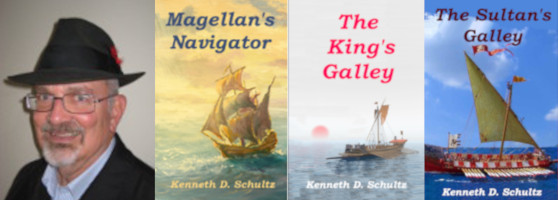Magellan’s approach to all natives that he met was to awe them with European martial invincibility, convert them to the one true God, while accumulating as much gold as possible.
He’d previously seen this done during his years with the Portuguese in India and Malaysia. There a relatively small number of Portuguese with armor and cannon had diverted much of the lucrative spice trade from Venice to Portugal. Magellan intended to do the same in the Philippines.
So, upon meeting the first raja in the Philippines, Magellan put on a demonstration of how one man with armor could defeat many without. He also immediately started his proselytizing.
I think Magellan probably underestimated the sophistication of the local rajas. I am no expert on this time in Philippine history, but it is clear that there were many local fiefdoms dotted through the islands. Through these the Okinawan traders plied their business along with Moslem traders from the south. While the Portuguese hadn’t yet penetrated to the Philippines, tales of their ruthlessness and power had. Magellan’s ships looked like those of the Portuguese despite his calling them Spanish, and the local rajas knew that they best beware of these intruders.
Magellan soon made his way to Cebu, a local trading center. There he triumphantly, he thought, converted the local raja, Humabon, to Christianity. Hundreds, if not thousands, of baptisms followed. Magellan was elated. One wonders what the ‘converted’ thought was happening. Next, at the bequest of Humabon, he conducted a successful punitive raid on a local rival of the Cebu raja. At this time, I believe Magellan thought he was well on his way to establishing a local kingdom for himself.
Meanwhile, many of Magellan’s crewmen, including his trusted brother-in-law Duarte Barbosa, were lost in an orgy of sex and drink. This certainly did nothing to endear the Europeans to the locals, and resentment against them steadily grew.
This all came to a rapid climatic end. Humabon convinced Magellan to bring the raja of Mactan, Lapulapu, into line. Magellan refused an offer of assistance from Humabon. However, by this time most of Magellan’s officers were eager to get along with their chartered mission to the Spice Islands, and refused to help Magellan in his empire-building. So, Magellan went to Mactan with sixty volunteers, and few of his better fighters. There, on April 27th, 1521, he died fighting bravely, albeit futilely, against a throng of Lapulapu’s warriors in a battle completely peripheral to his chartered objective.
The defeat at Mactan was a disaster for the armada. The idea of European martial invincibility was shattered and their leader dead. Pressure grew on Humabon to rid himself of these randy interlopers. And soon, from Magellan’s own camp, would come the plan to decapitate the Europeans.

 A recent review of Magellan’s Navigator complained that it was “boring and hard to follow all the names.” ‘Boring’ I can’t address. That is a personal reaction, and the book may be boring to some.
A recent review of Magellan’s Navigator complained that it was “boring and hard to follow all the names.” ‘Boring’ I can’t address. That is a personal reaction, and the book may be boring to some.